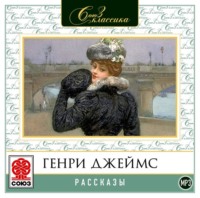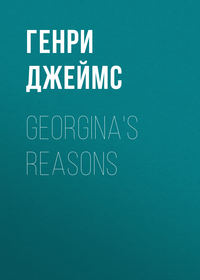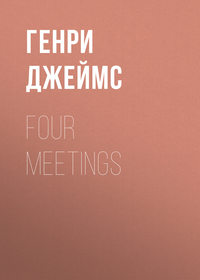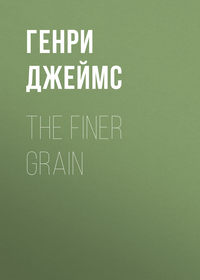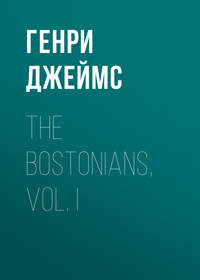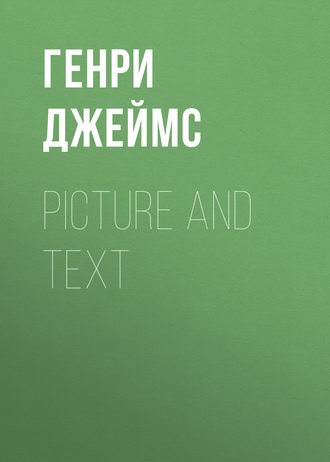 полная версия
полная версияPicture and Text
But after having wished that his country should be just so, we proceed to discover that it is in fact not a bit different. Between these phases of our consciousness he is an unfailing messenger. The reader will remember how often he has accompanied with pictures the text of some amiable paper describing a pastoral region—Warwickshire or Surrey. Devonshire or the Thames. He will remember his exquisite designs for certain of Wordsworth’s sonnets. A sonnet of Wordsworth is a difficult thing to illustrate, but Mr. Parsons’ ripe taste has shown him the way. Then there are lovely morsels from his hand associated with the drawings of his friend Mr. Abbey—head-pieces, tailpieces, vignettes, charming combinations of flower and foliage, decorative clusters of all sorts of pleasant rural emblems. If he has an inexhaustible feeling for the country in general, his love of the myriad English flowers is perhaps the fondest part of it. He draws them with a rare perfection, and always—little definite, delicate, tremulous things as they are—with a certain nobleness. This latter quality, indeed. I am prone to find in all his work, and I should insist on it still more if I might refer to his important paintings. So composite are the parts of which any distinguished talent is made up that we have to feel our way as we enumerate them; and yet that very ambiguity is a challenge to analysis and to characterization. This “nobleness” on Mr. Parsons’ part is the element of style—something large and manly, expressive of the total character of his facts. His landscape is the landscape of the male vision, and yet his touch is full of sentiment, of curiosity and endearment. These things, and others besides, make him the most interesting, the most living, of the new workers in his line. And what shall I say of the other things besides? How can I take precautions enough to say that among the new workers, deeply English as he is, there is comparatively something French in his manner? Many people will like him because they see in him—or they think they do—a certain happy mean. Will they not fancy they catch him taking the middle way between the unsociable French étude and the old-fashioned English “picture”? If one of these extremes is a desert, the other, no doubt, is an oasis still more vain. I have a recollection of productions of Mr. Alfred Parsons’ which might have come from a Frenchman who was in love with English river-sides. I call to mind no studies—if he has made any—of French scenery; but if I did they would doubtless appear English enough. It is the fashion among sundry to maintain that the English landscape is of no use for la peinture sérieuse, that it is wanting in technical accent and is in general too storytelling, too self-conscious and dramatic also too lumpish and stodgy, of a green—d’un vert bête—which, when reproduced, looks like that of the chromo. Certain it is that there are many hands which are not to be trusted with it, and taste and integrity have been known to go down before it. But Alfred Parsons may be pointed to as one who has made the luxuriant and lovable things of his own country almost as “serious” as those familiar objects—the pasture and the poplar—which, even when infinitely repeated by the great school across the Channel, strike us as but meagre morsels of France.
V
In speaking of Mr. George H. Boughton, A.R.A., I encounter the same difficulty as with Mr. Millet: I find the window closed through which alone almost it is just to take a view of his talent. Mr. Boughton is a painter about whom there is little that is new to tell to-day, so conspicuous and incontestable is his achievement, the fruit of a career of which the beginning was not yesterday. He is a draughtsman and an illustrator only on occasion and by accident. These accidents have mostly occurred, however, in the pages of Harper, and the happiest of them will still be fresh in the memory of its readers. In the Sketching Rambles in Holland Mr. Abbey was a participant (as witness, among many things, the admirable drawing of the old Frisian woman bent over her Bible in church, with the heads of the burghers just visible above the rough archaic pew-tops—a drawing opposite to page 112 in the handsome volume into which these contributions were eventually gathered together); but most of the sketches were Mr. Boughton’s, and the charming, amusing text is altogether his, save in the sense that it commemorates his companion’s impressions as well as his own—the delightful, irresponsible, visual, sensual, pictorial, capricious impressions of a painter in a strange land, the person surely whom at particular moments one would give most to be. If there be anything happier than the impressions of a painter, it is the impressions of two, and the combination is set forth with uncommon spirit and humor in this frank record of the innocent lust of the eyes. Mr. Boughton scruples little, in general, to write as well as to draw, when the fancy takes him; to write in the manner of painters, with the bold, irreverent, unconventional, successful brush. If I were not afraid of the patronizing tone I would say that there is little doubt that if as a painter he had not had to try to write in character, he would certainly have made a characteristic writer. He has the most enviable “finds,” not dreamed of in timid literature, yet making capital descriptive prose. Other specimens of them may be encountered in two or three Christmas tales, signed with the name whose usual place is the corner of a valuable canvas.
If Mr. Boughton is in this manner not a simple talent, further complications and reversions may be observed in him, as, for instance, that having reverted from America, where he spent his early years, back to England, the land of his origin, he has now in a sense oscillated again from the latter to the former country. He came to London one day years ago (from Paris, where he had been eating nutritively of the tree of artistic knowledge), in order to re-embark on the morrow for the United States; but that morrow never came—it has never come yet. Certainly now it never can come, for the country that Mr. Boughton left behind him in his youth is no longer there; the “old New York” is no longer a port to sail to, unless for phantom ships. In imagination, however, the author of “The Return of the Mayflower” has several times taken his way back; he has painted with conspicuous charm and success various episodes of the early Puritan story. He was able on occasion to remember vividly enough the low New England coast and the thin New England air. He has been perceptibly an inventor, calling into being certain types of face and dress, certain tones and associations of color (all in the line of what I should call subdued harmonies if I were not afraid of appearing to talk a jargon), which people are hungry for when they acquire “a Boughton,” and which they can obtain on no other terms. This pictorial element in which he moves is made up of divers delicate things, and there would be a roughness in attempting to unravel the tapestry. There is old English, and old American, and old Dutch in it, and a friendly, unexpected new Dutch too—an ingredient of New Amsterdam—a strain of Knickerbocker and of Washington Irving. There is an admirable infusion of landscape in it, from which some people regret that Mr. Boughton should ever have allowed himself to be distracted by his importunate love of sad-faced, pretty women in close-fitting coifs and old silver-clasped cloaks. And indeed, though his figures are very “tender,” his landscape is to my sense tenderer still. Moreover, Mr. Boughton bristles, not aggressively, but in the degree of a certain conciliatory pertinacity, with contradictious properties. He lives in one of the prettiest and most hospitable houses in London, but the note of his work is the melancholy of rural things, of lonely people and of quaint, far-off legend and refrain. There is a delightful ambiguity of period and even of clime in him, and he rejoices in that inability to depict the modern which is the most convincing sign of the contemporary. He has a genius for landscape, yet he abounds in knowledge of every sort of ancient fashion of garment; the buckles and button-holes, the very shoe-ties, of the past are dear to him. It is almost always autumn or winter in his pictures. His horizons are cold, his trees are bare (he does the bare tree beautifully), and his draperies lined with fur; but when he exhibits himself directly, as in the fantastic “Rambles” before mentioned, contagious high spirits are the clearest of his showing. Here he appears as an irrepressible felicitous sketcher, and I know no pleasanter record of the joys of sketching, or even of those of simply looking. Théophile Gautier himself was not more inveterately addicted to this latter wanton exercise. There ought to be a pocket edition of Mr. Boughton’s book, which would serve for travellers in other countries too, give them the point of view and put them in the mood. Such a blessing, and such a distinction too, is it to have an eye. Mr. Boughton’s, in his good-humored Dutch wanderings, holds from morning till night a sociable, graceful revel. From the moment it opens till the moment it closes, its day is a round of adventures. His jolly pictorial narrative, reflecting every glint of October sunshine and patch of russet shade, tends to confirm us afresh in the faith that the painter’s life is the best life, the life that misses fewest impressions.
VI
Mr. Du Maurier has a brilliant history, but it must be candidly recognized that it is written or drawn mainly in an English periodical. It is only during the last two or three years that the most ironical of the artists of Punch has exerted himself for the entertainment of the readers of Harper; but I seem to come too late with any commentary on the nature of his satire or the charm of his execution. When he began to appear in Harper he was already an old friend, and for myself I confess I have to go through rather a complicated mental operation to put into words what I think of him. What does a man think of the language he has learned to speak? He judges it only while he is learning. Mr. Du Maurier’s work, in regard to the life it embodies, is not so much a thing we see as one of the conditions of seeing. He has interpreted for us for so many years the social life of England that the interpretation has become the text itself. We have accepted his types, his categories, his conclusions, his sympathies and his ironies, It is not given to all the world to thread the mazes of London society, and for the great body of the disinherited, the vast majority of the Anglo-Saxon public. Mr. Du Maurier’s representation is the thing represented. Is the effect of it to nip in the bud any remote yearning for personal participation? I feel tempted to say yes, when I think of the follies, the flatnesses, the affectations and stupidities that his teeming pencil has made vivid. But that vision immediately merges itself in another—a panorama of tall, pleasant, beautiful people, placed in becoming attitudes, in charming gardens, in luxurious rooms, so that I can scarcely tell which is the more definite, the impression satiric or the impression plastic.
This I take to be a sign that Mr. Du Maurier knows how to be general and has a conception of completeness. The world amuses him, such queer things go on in it; but the part that amuses him most is certain lines of our personal structure. That amusement is the brightest; the other is often sad enough. A sharp critic might accuse Mr. Du Maurier of lingering too complacently on the lines in question; of having a certain ideal of “lissome” elongation to which the promiscuous truth is sometimes sacrificed. But in fact this artist’s P truth never pretends to be promiscuous; it is avowedly select and specific. What he depicts is so preponderantly the “tapering” people that the remainder of the picture, in a notice as brief as the present, may be neglected. If his dramatis personæ are not all the tenants of drawing-rooms, they are represented at least in some relation to these. ‘Arry and his friends at the fancy fair are in society for the time; the point of introducing them is to show how the contrast intensifies them. Of late years Mr. Du Maurier has perhaps been a little too docile to the muse of elegance; the idiosyncrasies of the “masher” and the high girl with elbows have beguiled him into occasional inattention to the doings of the short and shabby. But his career has been long and rich, and I allude, in such words, but to a moment of it.
The moral of it—I refer to the artistic one—seen altogether, is striking and edifying enough. What Mr. Du Maurier has attempted to do is to give, in a thousand interrelated drawings, a general satiric picture of the social life of his time and country. It is easy to see that through them “an increasing purpose runs;” they all hang together and refer to each other—complete, confirm, correct, illuminate each other. Sometimes they are not satiric: satire is not pure charm, and the artist has allowed himself to “go in” for pure charm. Sometimes he has allowed himself to go in for pure fantasy, so that satire (which should hold on to the mane of the real) slides off the other side of the runaway horse. But he remains, on the whole, pencil in hand, a wonderfully copious and veracious historian of his age and his civilization.
VII
I have left Mr. Reinhart to the last because of his importance, and now this very importance operates as a restriction and even as a sort of reproach to me. To go well round him at a deliberate pace would take a whole book. With Mr. Abbey, Mr. Reinhart is the artist who has contributed most abundantly to Harper; his work, indeed, in quantity, considerably exceeds Mr. Abbey’s. He is the observer of the immediate, as Mr. Abbey is that of the considerably removed, and the conditions he asks us to accept are less expensive to the imagination than those of his colleague. He is, in short, the vigorous, racy prosateur of that human comedy of which Mr. Abbey is the poet. He illustrates the modern sketch of travel, the modern tale—the poor little “quiet,” psychological, conversational modern tale, which I often think the artist invited to represent it to the eye must hate, unless he be a very intelligent master, little, on a superficial view, would there appear to be in it to represent. The superficial view is, after all, the natural one for the picture-maker. A talent of the first order, however, only wants to be set thinking, as a single word will often make it. Mr. Reinhart at any rate, triumphs; whether there be life or not in the little tale itself, there is unmistakable life in his version of it. Mr. Reinhart deals in that element purely with admirable frankness and vigor. He is not so much suggestive as positively and sharply representative. His facility, his agility, his universality are a truly stimulating sight. He asks not too many questions of his subject, but to those he does ask he insists upon a thoroughly intelligible answer. By his universality I mean perhaps as much as anything else his admirable drawing; not precious, as the æsthetic say, nor pottering, as the vulgar, but free, strong and secure, which enables him to do with the human figure at a moment’s notice anything that any occasion may demand. It gives him an immense range, and I know not how to express (it is not easy) my sense of a certain capable indifference that is in him otherwise than by saying that he would quite as soon do one thing as another.
For it is true that the admirer of his work rather misses in him that intimation of a secret preference which many strong draughtsmen show, and which is not absent, for instance (I don’t mean the secret, but the intimation), from the beautiful doings of Mr. Abbey. It is extremely present in Mr. Du Maurier’s work, just as it was visible, less elusively, in that of John Leech, his predecessor in Punch. Mr. Abbey has a haunting type; Du Maurier has a haunting type. There was little perhaps of the haunted about Leech, but we know very well how he wanted his pretty girls, his British swell, and his “hunting men” to look. He betrayed a predilection; he had his little ideal. That an artist may be a great force and not have a little ideal, the scarcely too much to be praised Charles Keene is there (I mean he is in Punch) to show us. He has not a haunting type—not he—and I think that no one has yet discovered how he would have liked his pretty girls to look. He has kept the soft conception too much to himself—he has not trifled with the common truth by letting it appear. This common truth, in its innumerable combinations, is what Mr. Rein-hart also shows us (with of course infinitely less of a parti pris of laughing at it), though, as I must hasten to add, the female face and form in his hands always happen to take on a much lovelier cast than in Mr. Keene’s. These things with him, however, are not a private predilection, an artist’s dream. Mr. Reinhart is solidly an artist, but I doubt whether as yet he dreams, and the absence of private predilections makes him seem a little hard. He is sometimes rough with our average humanity, and especially rough with the feminine portion of it. He usually represents American life, in which that portion is often spoken of as showing to peculiar advantage. But Mr. Reinhart sees it generally, as very bourgeois. His good ladies are apt to be rather thick and short, rather huddled and plain. I shouldn’t mind it so much if they didn’t look so much alive. They are incontestably possible. The long, brilliant series of drawings he made to accompany Mr. Charles Dudley Warner’s papers on the American watering-places form a rich bourgeois epic, which imaginations haunted by a type must accept with philosophy, for the sketches in question will have carried the tale, and all sorts of irresistible illusion with it, to the four corners of the earth. Full of observation and reality, of happy impressionism, taking all things as they come, with many a charming picture of youthful juxtaposition, they give us a sense, to which nothing need be added, of the energy of Mr. Reinhart’s pencil. They are a final collection of pictorial notes on the manners and customs, the aspects and habitats, in July and August, of the great American democracy; of which, certainly, taking one thing with another, they give a very comfortable, cheerful account. But they confirm that analytic view of which I have ventured to give a hint—the view of Mr. Reinhart as an artist of immense capacity who yet somehow doesn’t care. I must add that this aspect of him is modified, in the one case very gracefully, in the other by the operation of a sort of constructive humor, remarkably strong, in his illustrations of Spanish life and his sketches of the Berlin political world.
His fashion of remaining outside, as it were, makes him (to the analyst) only the more interesting, for the analyst, if he have any critical life in him, will be prone to wonder why he doesn’t care, and whether matters may not be turned about in such a way as that he should, with the consequence that his large capacity would become more fruitful still. Mr. Reinhart is open to the large appeal of Paris, where he lives—as is evident from much of his work—where he paints, and where, in crowded exhibitions, reputation and honors have descended upon him. And yet Paris, for all she may have taught him, has not given him the mystic sentiment—about which I am perhaps writing nonsense. Is it nonsense to say that, being very much an incarnation of the modern international spirit (he might be a Frenchman in New York were he not an American in Paris), the moral of his work is possibly the inevitable want of finality, of intrinsic character, in that sweet freedom? Does the cosmopolite necessarily pay for his freedom by a want of function—the impersonality of not being representative? Must one be a little narrow to have a sentiment, and very local to have a quality, or at least a style; and would the missing type, if I may mention it yet again, haunt our artist—who is somehow, in his rare instrumental facility, outside of quality and style—a good deal more if he were not, amid the mixture of associations and the confusion of races, liable to fall into vagueness as to what types are? He can do anything he likes; by which I mean he can do wonderfully even the things he doesn’t like. But he strikes me as a force not yet fully used.
EDWIN A. ABBE
Nothing is more interesting in the history of an artistic talent than the moment at which its “elective affinity” declares itself, and the interest is great in proportion as the declaration is unmistakable. I mean by the elective affinity of a talent its climate and period of preference, the spot on the globe or in the annals of mankind to which it most fondly attaches itself, to which it reverts incorrigibly, round which it revolves with a curiosity that is insatiable, from which in short it draws its strongest inspiration. A man may personally inhabit a certain place at a certain time, but in imagination he may be a perpetual absentee, and to a degree worse than the worst Irish landlord, separating himself from his legal inheritance not only by mountains and seas, but by centuries as well. When he is a man of genius these perverse predilections become fruitful and constitute a new and independent life, and they are indeed to a certain extent the sign and concomitant of genius. I do not mean by this that high ability would always rather have been born in another country and another age, but certainly it likes to choose, it seldom fails to react against imposed conditions. If it accepts them it does so because it likes them for themselves; and if they fail to commend themselves it rarely scruples to fly away in search of others. We have witnessed this flight in many a case; I admit that if we have sometimes applauded it we have felt at other moments that the discontented, undomiciled spirit had better have stayed at home.
Mr. Abbey has gone afield, and there could be no better instance of a successful fugitive and a genuine affinity, no more interesting example of selection—selection of field and subject—operating by that insight which has the precocity and certainty of an instinct. The domicile of Mr. Abbey’s genius is the England of the eighteenth century; I should add that the palace of art which he has erected there commands—from the rear, as it were—various charming glimpses of the preceding age. The finest work he has yet done is in his admirable illustrations, in Harper’s Magazine, to “She Stoops to Conquer,” but the promise that he would one day do it was given some years ago in his delightful volume of designs to accompany Herrick’s poems; to which we may add, as supplementary evidence, his drawings for Mr. William Black’s novel of Judith Shakespeare.
Mr. Abbey was born in Philadelphia in 1852, and manifesting his brilliant but un-encouraged aptitudes at a very early age, came in 1872 to New York to draw for Harper’s WEEKLY. Other views than this, if I have been correctly Informed, had been entertained for his future—a fact that provokes a smile now that his manifest destiny has been, or is in course of being, so very neatly accomplished. The spirit of modern aesthetics did not, at any rate, as I understand the matter, smile upon his cradle, and the circumstance only increases the interest of his having had from the earliest moment the clearest artistic vision.
It has sometimes happened that the distinguished draughtsman or painter has been born in the studio and fed, as it were, from the palette, but in the great majority of cases he has been nursed by the profane, and certainly, on the doctrine of mathematical chances, a Philadelphia genius would scarcely be an exception. Mr. Abbey was fortunate, however, in not being obliged to lose time; he learned how to swim by jumping into deep water. Even if he had not known by instinct how to draw, he would have had to perform the feat from the moment that he found himself attached to the “art department” of a remarkably punctual periodical. In such a periodical the events of the day are promptly reproduced; and with the morrow so near the day is necessarily a short one—too short for gradual education. Such a school is not, no doubt, the ideal one, but in fact it may have a very happy influence. If a youth is to give an account of a scene with his pencil at a certain hour—to give it, as it were, or perish—he will have become conscious, in the first place, of a remarkable incentive to observe it. so that the roughness of the foster-mother who imparts the precious faculty of quick, complete observation is really a blessing in disguise. To say that it was simply under this kind of pressure that Mr. Abbey acquired the extraordinary refinement which distinguishes his work in black and white is doubtless to say too much; but his admirers may be excused, in view of the beautiful result, for almost wishing, on grounds of patriotism, to make the training, or the absence of training, responsible for as much as possible. For as no artistic genius that our country has produced is more delightful than Mr. Abbey’s, so, surely, nothing could be more characteristically American than that it should have formed itself in the conditions that happened to be nearest at hand, with the crowds, streets and squares, the railway stations and telegraph poles, the wondrous sign-boards and triumphant bunting, of New York for the source of its inspiration, and with a big hurrying printing-house for its studio. If to begin the practice of art in these conditions was to incur the danger of being crude, Mr. Abbey braved it with remarkable success. At all events, if he went neither I through the mill of Paris nor through that of Munich, the writer of these lines more than consoles himself for the accident. His talent is unsurpassably fine, and yet we reflect with complacency that he picked it up altogether at home. If he is highly distinguished he is irremediably native, and (premising always that I speak mainly of his work in black and white) it is difficult to see, as we look, for instance, at the admirable series of his drawings for “She Stoops to Conquer,” what more Paris or Munich could have done for him. There is a certain refreshment in meeting an American artist of the first order who is not a pupil of Gérôme or of Cabanel.



